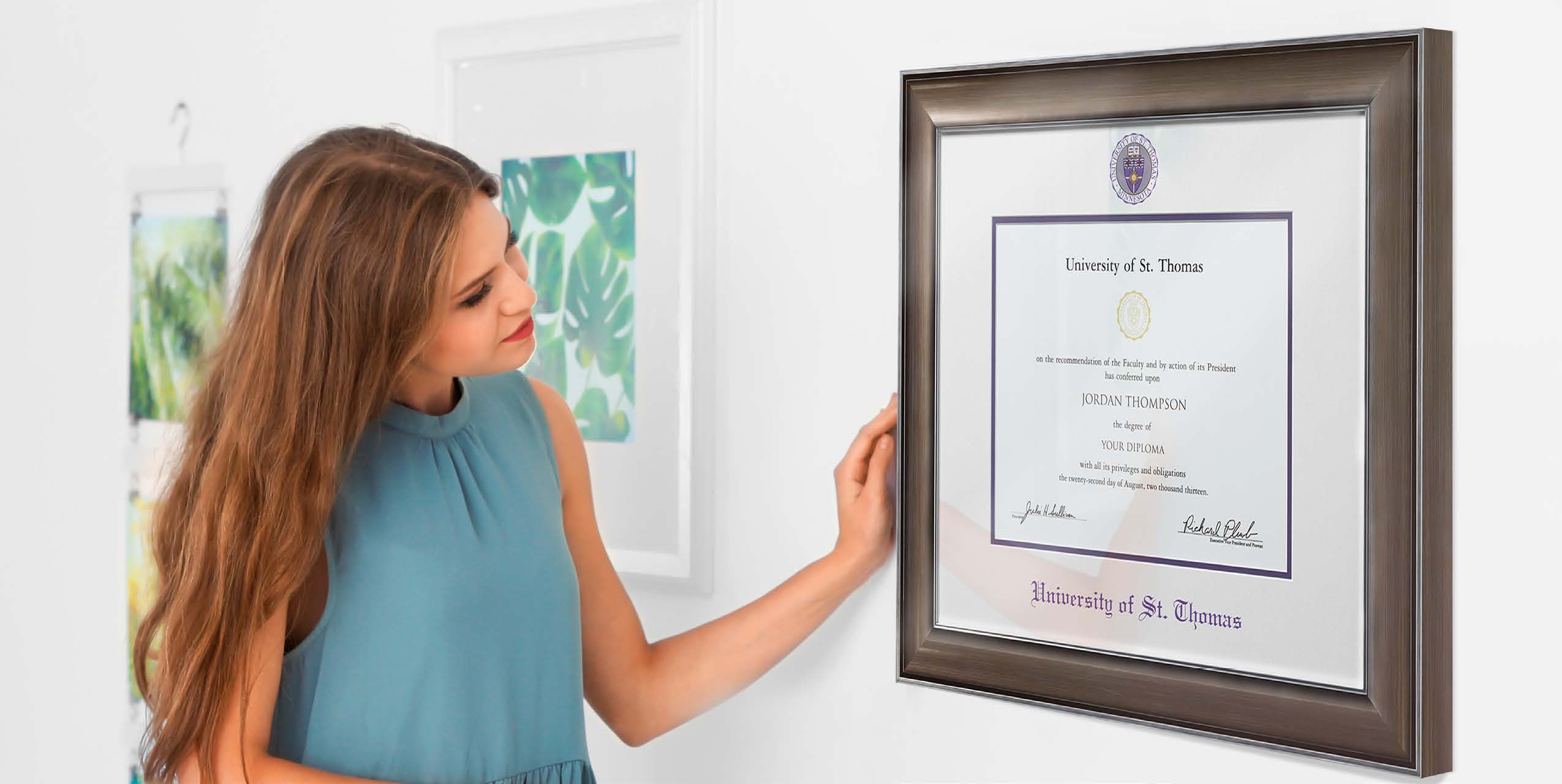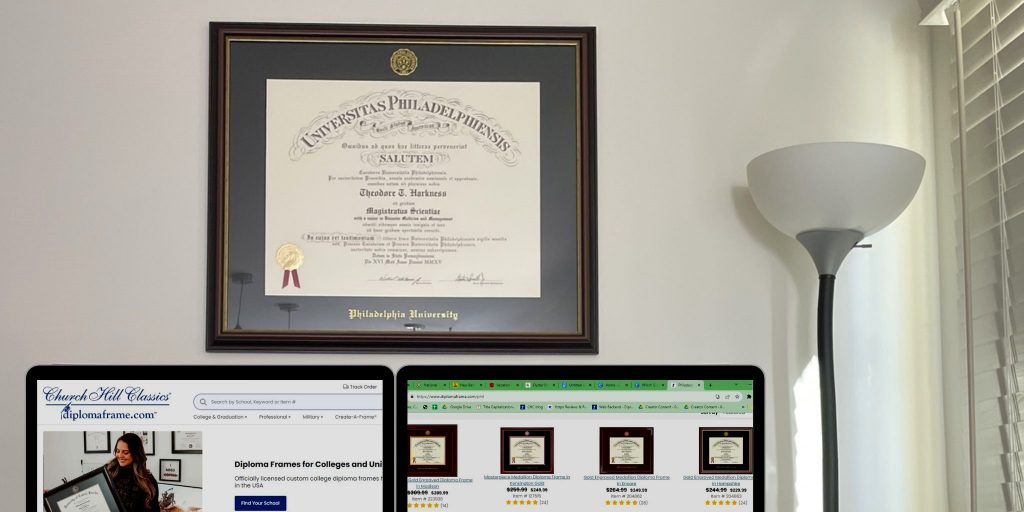
Do you have a work of art, diploma, photo, or document that you would like to frame? This will help protect it from airborne pollutants. You’ll need to know which glass to choose to safeguard your valuable papers. Choose the type of “glazing” for your photo frame glass carefully. Factors to consider include cost-effective options, the items you are framing, and where you will hang the pieces.
You will also have to consider aesthetics. Are you aiming for a surface with a glossy shine or maximum clarity so that something in the art stands out? Maybe you’ll choose picture frame glazing that doesn’t reflect light. This will create a more muted look, similar to museum glass.
“Glazing” refers to the coating on picture frame glass or acrylic (Plexiglass) and the protection it provides to the contents. There are a number of glazing options. Regular picture glass is the most common type of glazing. Other options include non-glare glass, acrylic picture frame glass, and conservation- or museum-grade glass.
Types of Glazing for Glass Frames
From UV glass frames to conservation glass, there are many options to choose from when creating your custom frame. These are just a few of the options to consider along with their advantages and disadvantages:
Regular Glass Frame
Regular picture glass is strong, not easily scratched, and the most popular and inexpensive option. It protects the art fairly well and has approximately 45% UV protection (both UVA and UVB rays). Regular glass is also easy to clean with standard glass cleaner, although we do recommend using an ammonia-free brand. On the downside, regular glass is brittle, heavy, and doesn’t contain any reflection-control properties.
Non-Glare Glass
Non-glare or reflection-control glass has a matte finish. This finish diffuses light reflections, making it ideal for artwork in areas that are prone to glare. Picture frames are a common application for this type of glass. If you don’t find shiny glass aesthetically pleasing, this is a good choice. This type of glass has a slightly frosted coating on one side to prevent glare and reflections.
The matte-finish surface should be on the front of the framed piece with the regular shiny side facing inward. This glazing will reduce glare and reflections. Non-glare glass does have a disadvantage. It distorts the artwork when viewed from any angle, making it appear blurry.

Acrylic Picture Frame Glass
Another popular glazing option is acrylic picture frame glass, commonly called Plexiglass. Acrylic glazing is much lighter than glass and very difficult to break. It comes in regular, non-glare, standard, and conservation-quality forms. Shipping framed pieces with acrylic glazing is much easier and safer, especially for large pieces.
The disadvantages of acrylic covers are that they scratch easily and are generally more expensive than glass. Also, because it’s made of plastic, regular glass cleaners will make the surface foggy. And even a paper towel can scratch this surface. A soft cloth and a special Plexiglass cleaner, or plain water, should be used to clean clear acrylic glazing. For reflection-control acrylic, we suggest a dry microfiber cloth, wiping in a soft, circular motion (or mild soap and water solution may be used if dry cleaning is not effective).
Styrene
Some lower-cost commercially framed posters or ready-made frames may include a thin plastic called Styrene. This material is lightweight, inexpensive, and resists shattering. Its main purpose is to provide physical protection from dust and scratches, but it does not have a very substantial appearance for framing projects. You should only use a dry cloth to clean Styrene.

Avoid Direct Sunlight
No matter which picture frame glass you choose, it’s always best to keep important or valuable pieces away from direct light sources such as windows. Keep in mind too that, over time, exposure to both indoor and outdoor UV rays can contribute to fading and deterioration of art, photographs, historical documents, and other framed keepsakes.
Today, most giclées (digital artwork printed from inkjet printers), high-quality reproductions, and original artwork use permanent inks and pigments, as do most formal certificates and documents. This is not guaranteed, however, and older pieces are likely to be prone to fading. Some elements like signatures might be in non-permanent ink, and those areas are susceptible to fading while the rest of the piece or document may be color-stable. The surest course to prevent color fading is to invest in a conservation-quality, high UV-blocking type of glazing for your frame.
Which Glass Has the Best UV Protection?
Luckily, there are a few options to choose from when it comes to UV glass for picture frames. This means you can find a UV glass frame that both protects your document from harmful rays and fits your aesthetic.
Conservation Glass
Conservation or museum-grade glazing has a special coating that eliminates 99% of the UV light that can cause fading. This offers the highest level of UV protection. This premium glazing is also optically very clear and will keep framed pieces looking brighter for many years.
Conservation glass is costly. However, it is worth the expense if you need to protect a special souvenir or valuable artwork. We recommend Tru Vue® for conservation-quality glass and acrylic. When you choose upgraded UV or UVRC glazing for your diploma frame at diplomaframe.com, you will get Tru Vue®.

Tru Vue® Conservation Clear® is an excellent product for those looking for a clear glass with extra thickness. It also has an optically clear UV coating with no ripple effect. The UV coating of lesser-quality brands may produce an “orange peel” effect, which distorts the image quality. This is the reason we prefer to use Tru Vue®.
You can have it all with Conservation Reflection Control® acrylic. This upgrade option provides maximum UV protection, optimal clarity plus the benefits of a lightweight, non-reflective surface and high breakage resistance. You will pay the most for UVRC (UV + reflection control) glass and acrylic, but it is a fantastic product.
This surface should be cleaned with a dry microfiber cloth by wiping in a soft, circular motion. Mild soap and water solution may be used if dry cleaning is not effective, but do not use glass or acrylic cleaners. These can leave streaks and make the artwork inside appear blurry.

Consider Your Artwork
When selecting the best glazing choice for your frame, there are a couple of other important considerations. Acrylic may not be the best choice for “loose media,” such as charcoals or pastels. Acrylic can build up a static charge, which can attract the pigment particles off the paper.
There are premium acrylic products with anti-static properties suited for these special applications if you need a lightweight acrylic option. Additionally, keep in mind that it is important to create air space between the glazing and the art itself. This is the main reason for choosing a mat or spacer bars to separate the art from the glazing.
Always consider what your artwork is made of in addition to its dimensions and weight before choosing picture frame glass.
We’re the Picture Frame Glass Experts
With so many picture frame glass options to choose from, it can often feel overwhelming. That’s where our expert advice can be extremely helpful.
Our expert craftspeople at Church Hill Classics have the perfect picture frame glass options for any item you want to frame. This includes photos, documents, and pieces of art. Design your own custom frame with the perfect glass for your needs.
RELATED BLOGS YOU MAY ALSO LIKE:

Lucie Voves
Lucie Voves is the Founder and CEO of Church Hill Classics/diplomaframe.com, a certified woman-owned business and 12-time Inc. 5000 Award Honoree.









